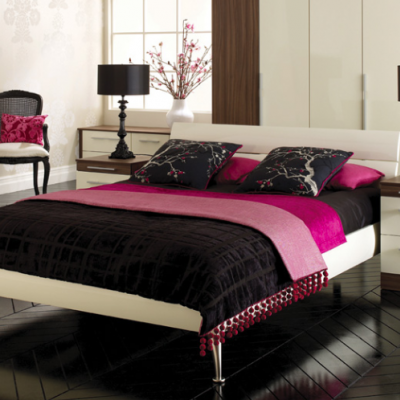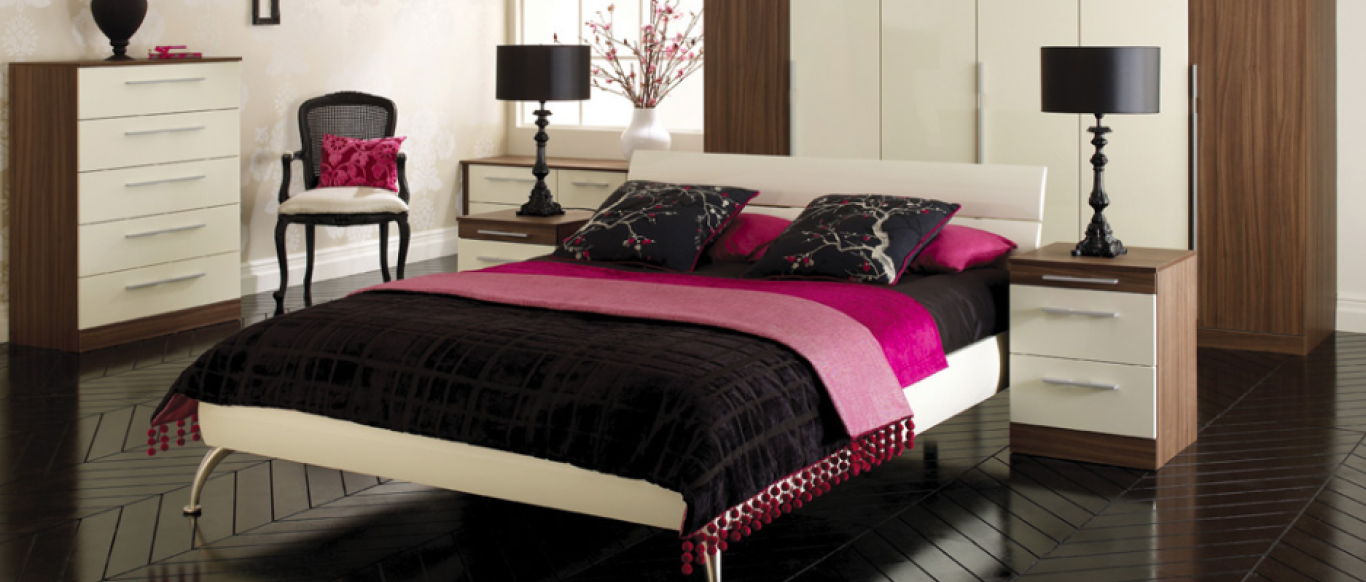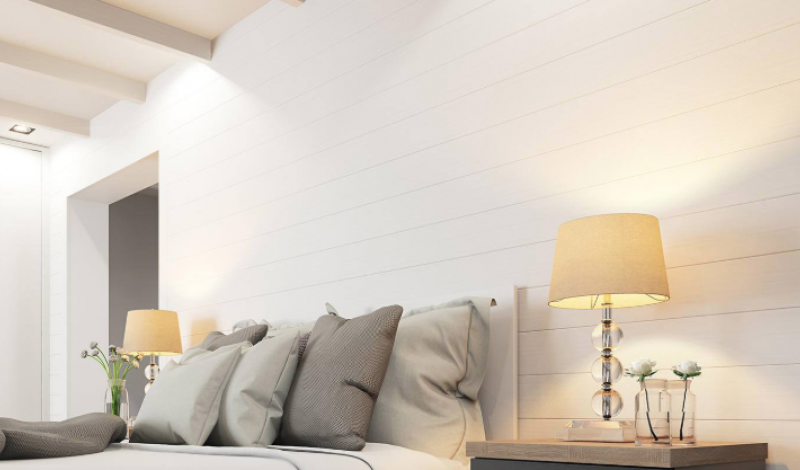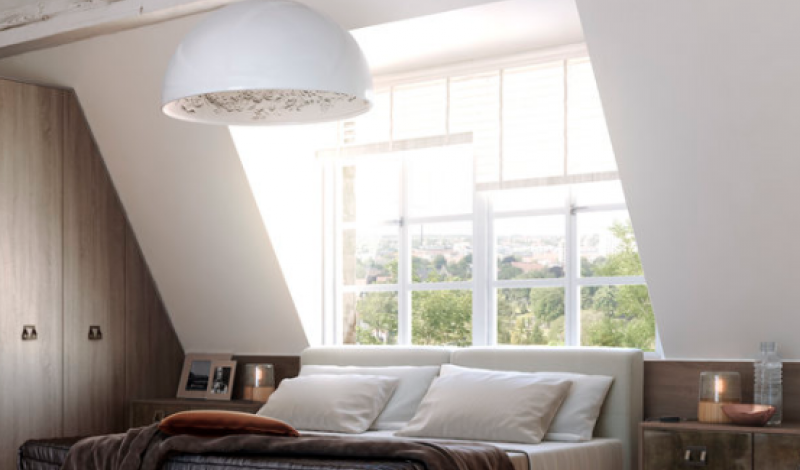Designing An Accessible Bedroom
 1
1Feb '19
The UK is home to 11m people living with a disability and 1.2m wheelchair users, yet 365,000 disabled people say their home is not suitable for their needs. Follow our guide to ensure your bedroom is suitably adapted for accessibility.
What is an accessible bedroom?
An accessible bedroom is one that is easy for disabled people to enter, leave and live in. Making a room accessible involves complying to various guidelines and regulations in terms of structure, layout, design, furniture and support, all of which are there to ensure maximum possible comfort and ease of access.
A bedroom is somewhere you spend at least 8 hours a day in. It should be a peaceful sanctuary in which you can relax and wind down. The first step to ensuring this is the case for someone with restricted mobility is positioning the room on an accessible floor. This would usually be the ground floor unless you have a lift installed.
Making your bed accessible
Your bed is where you start and end your days. It needs to be something that is easy to get in and out of (even on those cold, winter mornings!), and that means making sure the correct design and structural elements are in place.
The first factor to consider when choosing and positioning an accessible bed is the route between it and the entrance. Make sure there is plenty of space between the door, bed and any closets and drawers to ensure manoeuvring around the room is as straightforward as possible.
Ideally, you should provide access around three-quarters of the bed to allow a wheelchair user the choice of either side for sleeping, but for smaller bedrooms, you may want to push the bed against the wall to create a wider access route.
The mattress needs to be the same height as the bedroom user’s wheelchair cushion to ensure an easy transfer. If this is likely to involve a struggle or any discomfort, we advise installing either a ceiling lift or portable floor lift.
It’s important to place bed rails, floor-to-ceiling poles or grab bars in areas where you, or the person using the room, will need support. Those looking for maximum protection and peace of mind may also want to consider an emergency pull cord by the bed.
Wheelchair accessible doors and entrance requirements
One of the most important requirements of an accessible bedroom is its ease of access. The entrance to the room should include a wheelchair accessible door suitable for pulls and grab rails. Lever handles for disabled access should be between 900mm and 1100mm above the floor.
Make sure there is enough space to manoeuvre a wheelchair past the door swing; the minimum clear opening should be 840mm and, ideally, the swing should be at least 900mm wide. Reduced swing doors are a handy option if space is minimal.
If you foresee a potential need for a door-opening device, leave a minimum gap of 380mm between the top of the door and the ceiling. Otherwise, the installation of such a device will not be possible.
If your bedroom is equipped with a self-closing door (a fire door, for example), it’s important that you check there is enough time for wheelchair users to pass through before it closes.
Window requirements for an accessible bedroom
As is the case with disabled access doors, lever handles are preferable to knobs for windows, too.
Ideally, your window controls/handles should be operable with a clenched fist without using both hands. They should be placed between 800-1000mm from the floor, and any need for finger dexterity should be avoided. To aid visually impaired people, contrast the colours of your window controls with their surroundings.
The safety requirements of an accessible bedroom require any part of your windows that open to be no lower than 800mm above the floor. Any windows that exceed that should have safety glass installed.
To ensure wheelchair users can enjoy the view, the space below the window should be no higher than 900mm.
Bedroom design for easy, accessible living
Furniture - particularly in relation to the room’s layout and dimensions - plays a key role in creating an accessible bedroom. Stable and sturdy furniture should take priority, with each piece placed wisely to maximise manoeuvrability for wheelchair users.
Closet doors should remain wide to allow access to the whole storage unit, with barn doors a preferable option. Wardrobe rods should be positioned 47-55” above the floor, while D-ring pulls and lightweight drawers ought to be the go-to choice.
The minimum wheelchair turning circle is 5x5’, so keep this in mind when planning the layout of your accessible bedroom. Remember to install electrical outlets by the bed so that occupants can charge their phone and use other devices without having to get up and down too often.
In terms of electricals, bear in mind that there should be absolutely no loose wires lying around, as these are of course a trip hazard, especially for the elderly or those with a visual impairment.
When deciding on which room you will be transforming into an accessible bedroom, be sure to pick one with a bathroom located nearby. Preferably, an accessible bedroom, particularly one designed for a wheelchair user, should have an ensuite.
Choosing the right flooring for an accessible bedroom
If you are designing a bedroom for someone with mobility issues or visual impairment, make sure you avoid slippery surfaces or carpet flooring where possible. Carpets can make movement difficult for wheelchair users and rugs are often causes for falls and accidents.
When deciding on the flooring for your accessible bedroom, aim for slip-resistant materials such as vinyl or rubber. Bold patterns and shiny surfaces can confuse visually impaired people, so pick a colour that is unlikely to blend in with the walls or reflect too much light.
Choosing the right lighting and colour for an accessible bedroom
For anyone with a visual impairment, transitions from dark to light need to be gradual. Therefore a dimmer switch can be a great addition when it comes to increasing the accessibility of your bedroom.
Aim for a combination of natural and artificial light and install fluorescent fixtures to brighten up small spaces like the wardrobe.
When picking a colour palette, we advise you create colour-blocked areas by contrasting paint, decor and textures. This will help visually impaired people when they want to access - and differentiate between - the space’s features and furniture.
Where to position switches in an accessible bedroom
We rely on electrical appliances and sockets on a day-to-day basis, so making sure they are easily accessible is vital when designing a bedroom for someone with a disability.
For the benefit of wheelchair users, install your light switches so that they are aligned horizontally with door handles and avoid positioning any sockets and switches closer than 350mm from the corners of the room.
As a minimum, electrical sockets and phone/TV points should be installed 900mm above the door, while permanently wired appliances need to be mounted 1000mm above.
Increase accessibility of your bedroom without compromising on design
Our expert Kbsa Approved Retailers are here to give you the very best advice before creating and installing the bespoke bedroom of your dreams, specifically designed to your individual tastes and requirements. No matter what questions you may have, do not hesitate to get in touch!
Already have the perfect bedroom but hoping to make your kitchen more accessible? Check out the Kbsa Accessible Kitchens Guide.



